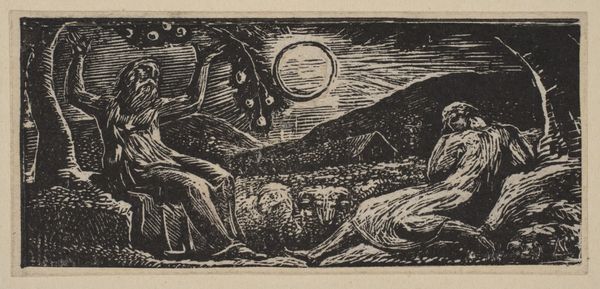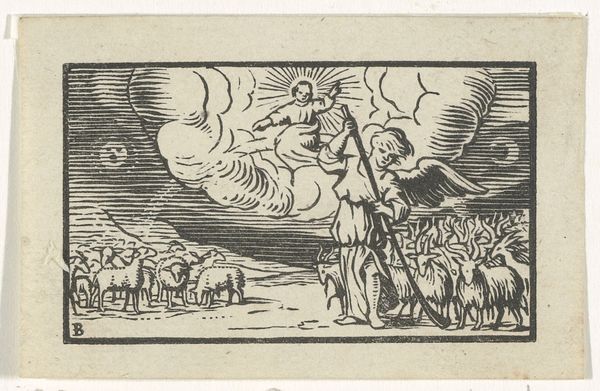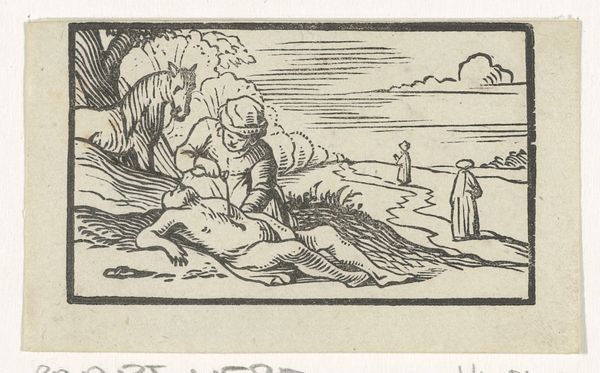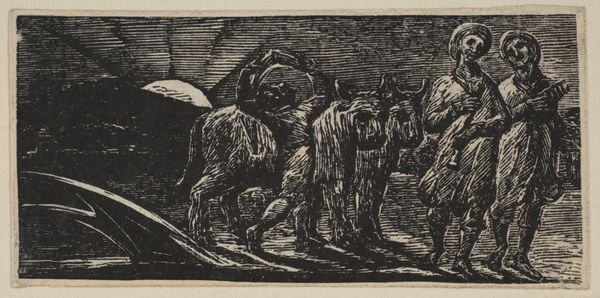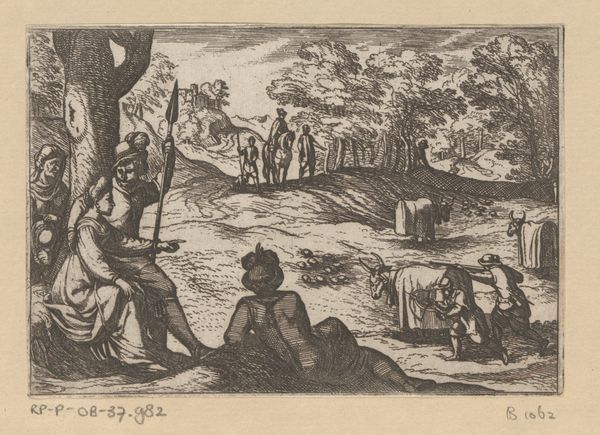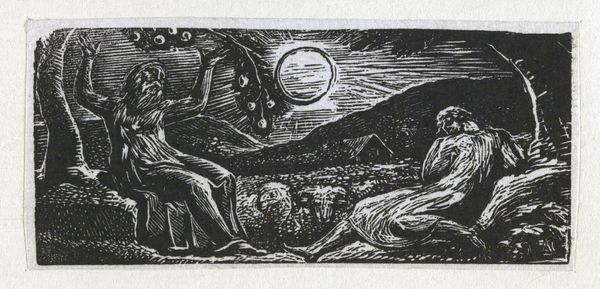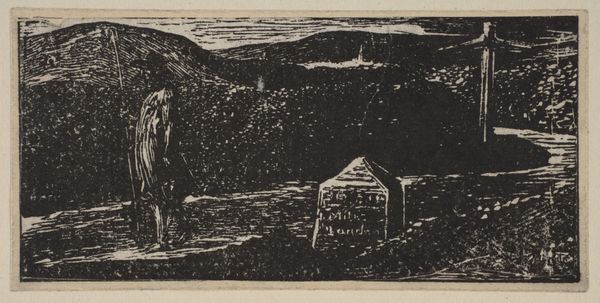
drawing, ink, engraving
#
drawing
#
baroque
#
pen illustration
#
pen sketch
#
landscape
#
figuration
#
ink
#
history-painting
#
engraving
Dimensions: height 43 mm, width 64 mm
Copyright: Rijks Museum: Open Domain
This small woodcut, depicting Christ on the cross between two thieves, was made by Dirck de Bray around the mid-17th century. The image is a testament to the power of the woodcut medium. De Bray used a sharp knife or chisel to carve away areas of a woodblock, leaving the lines of the composition in relief. When inked and pressed onto paper, these lines create a graphic, high-contrast image. The way de Bray contrasts the dark, almost violent lines of the scene with the white of the paper is striking. The texture of the wood itself becomes part of the aesthetic. You can feel the artist's hand in every cut, a directness that speaks to the skilled labor involved in its production. The choice of a relatively inexpensive and easily reproducible medium like the woodcut speaks to the wider social context of the time. Prints like this allowed for the dissemination of religious imagery to a broad audience, making art more accessible and connecting with the wider world. The humble material transforms the well-known narrative into something immediate and tangible.
Comments
No comments
Be the first to comment and join the conversation on the ultimate creative platform.
